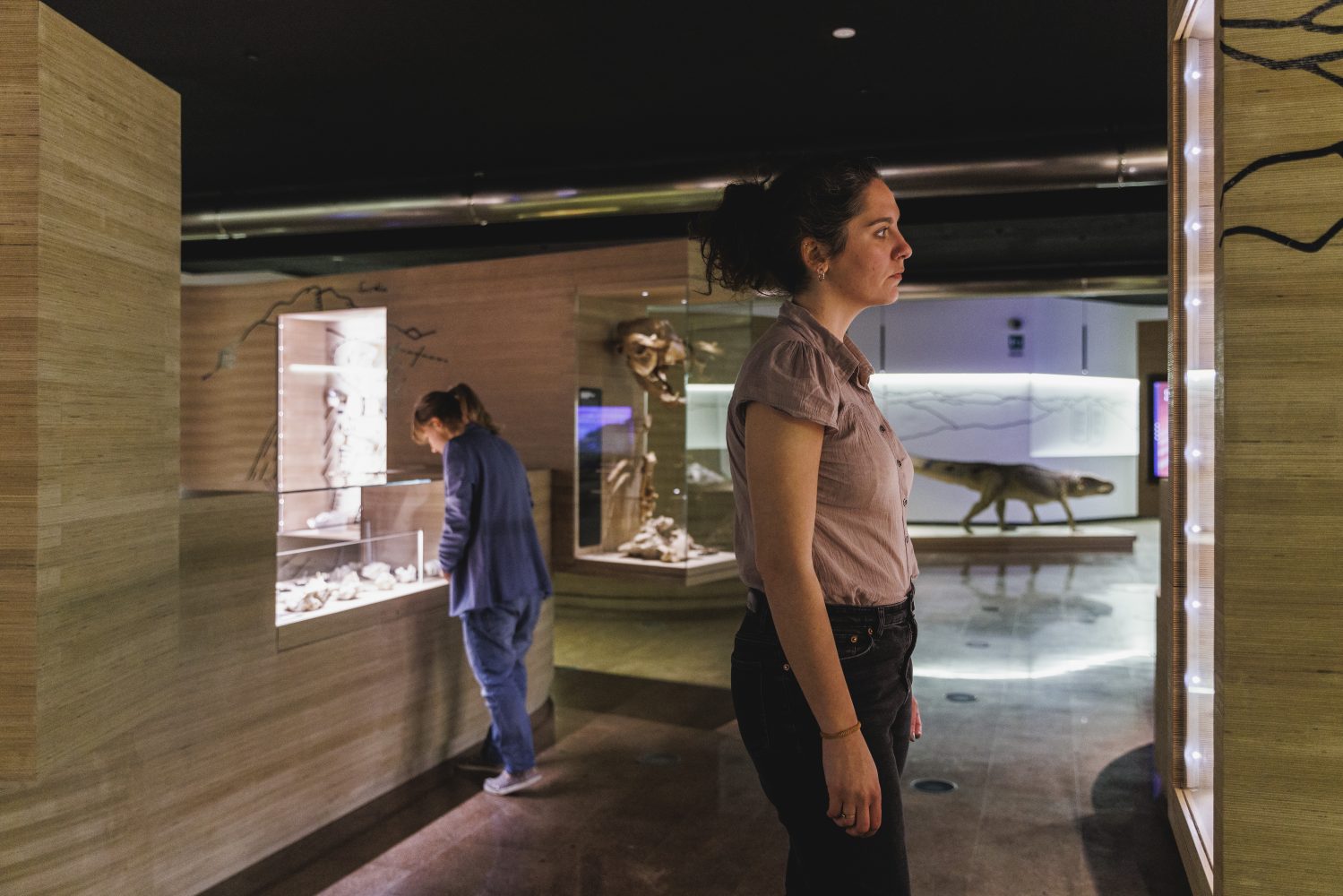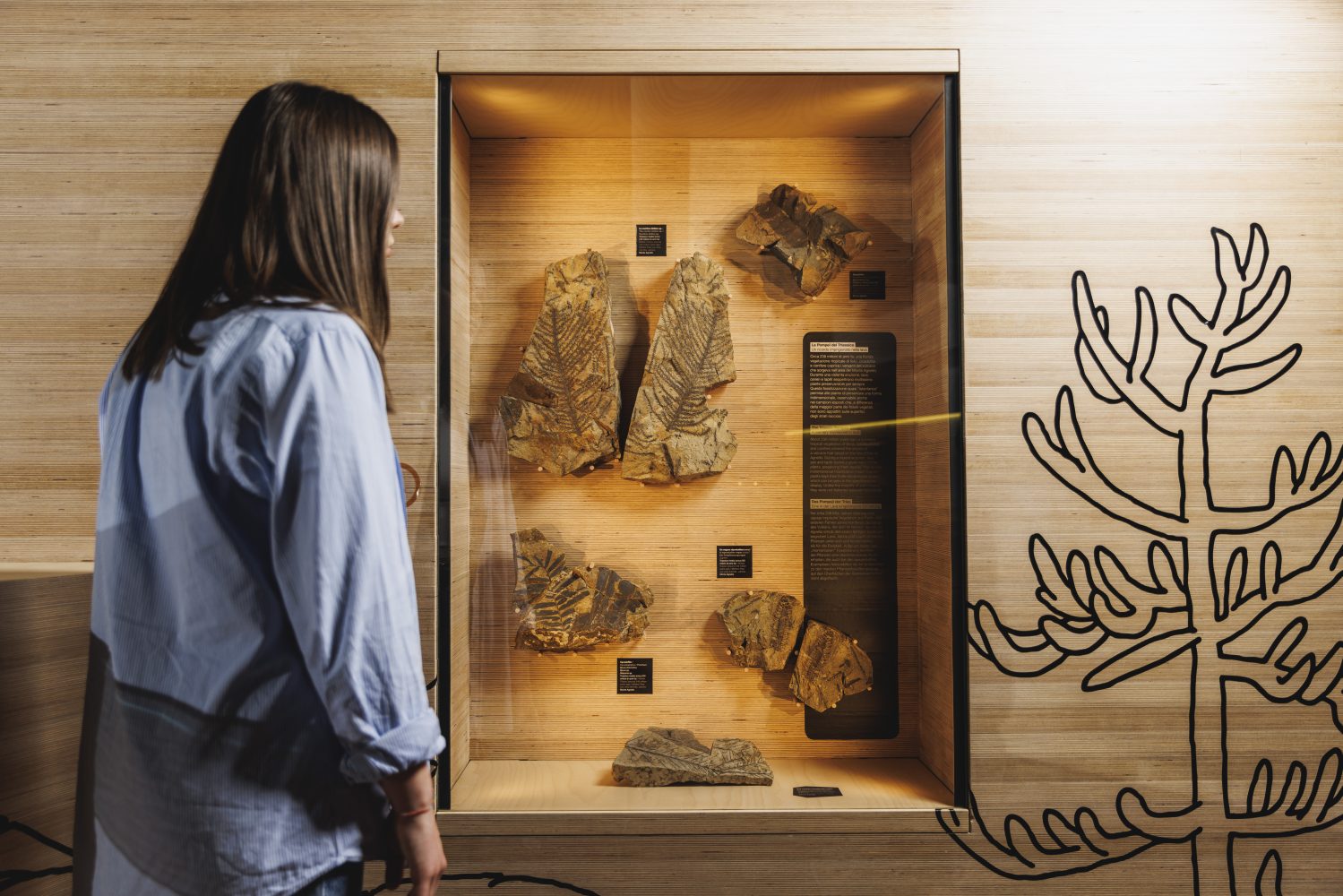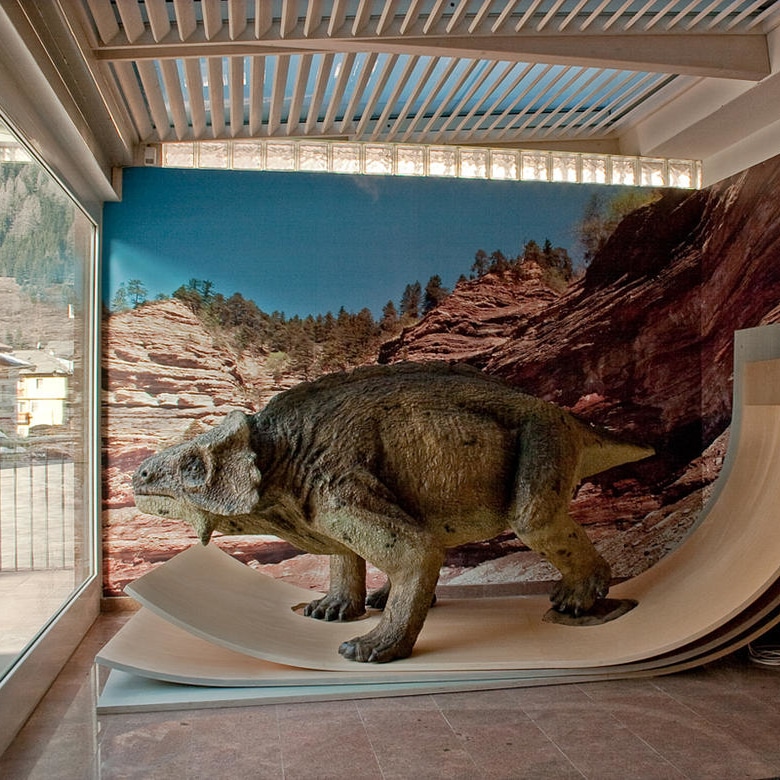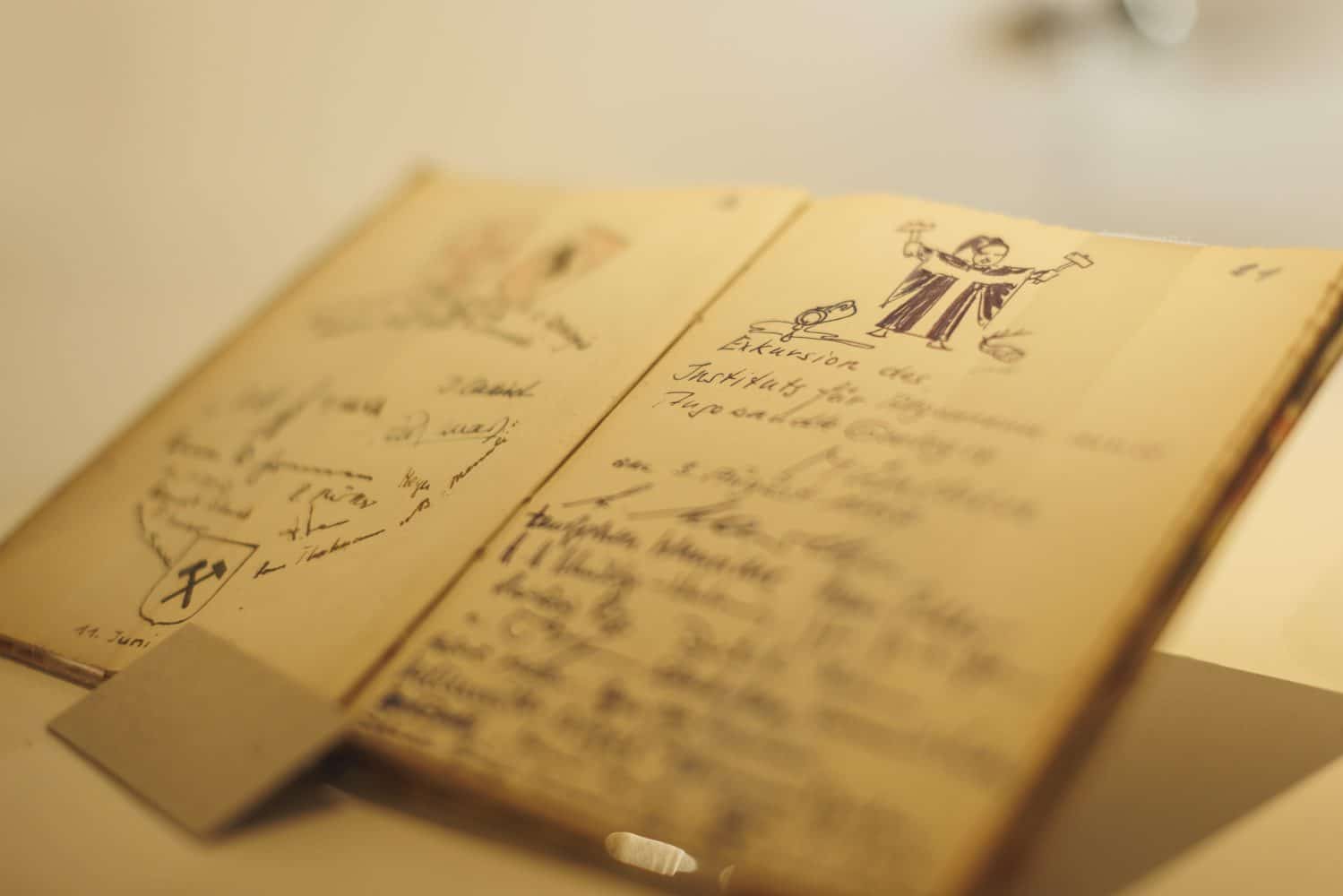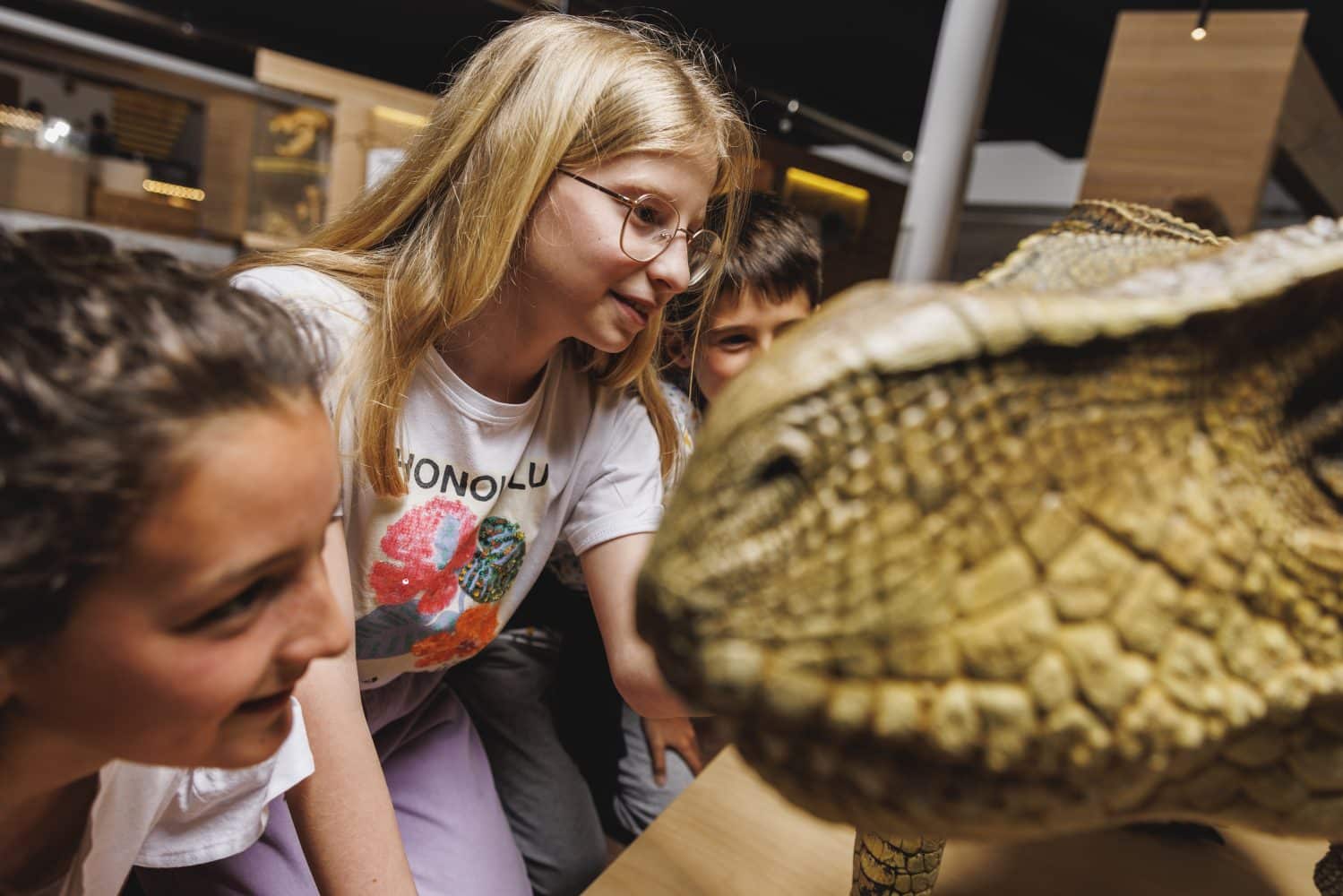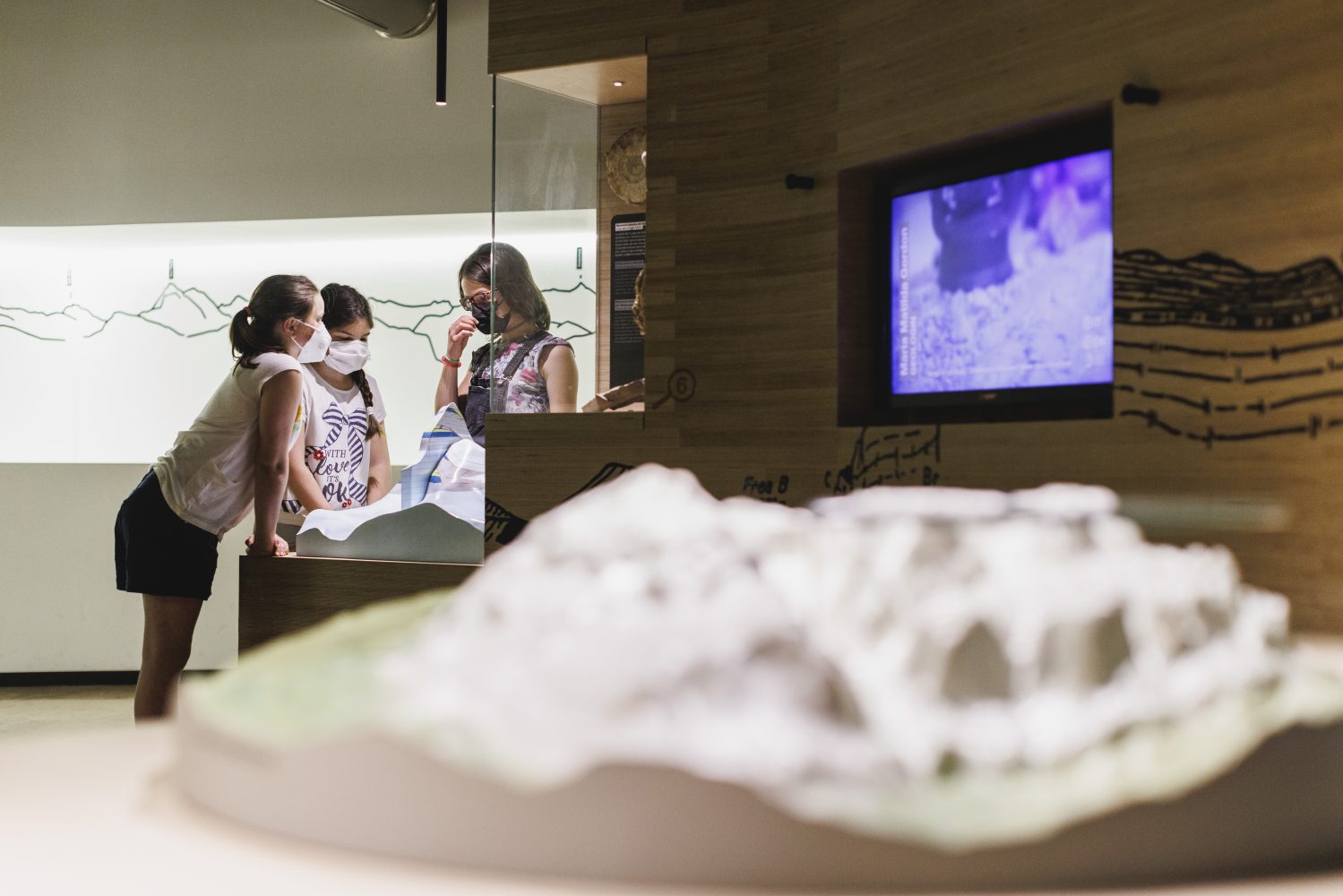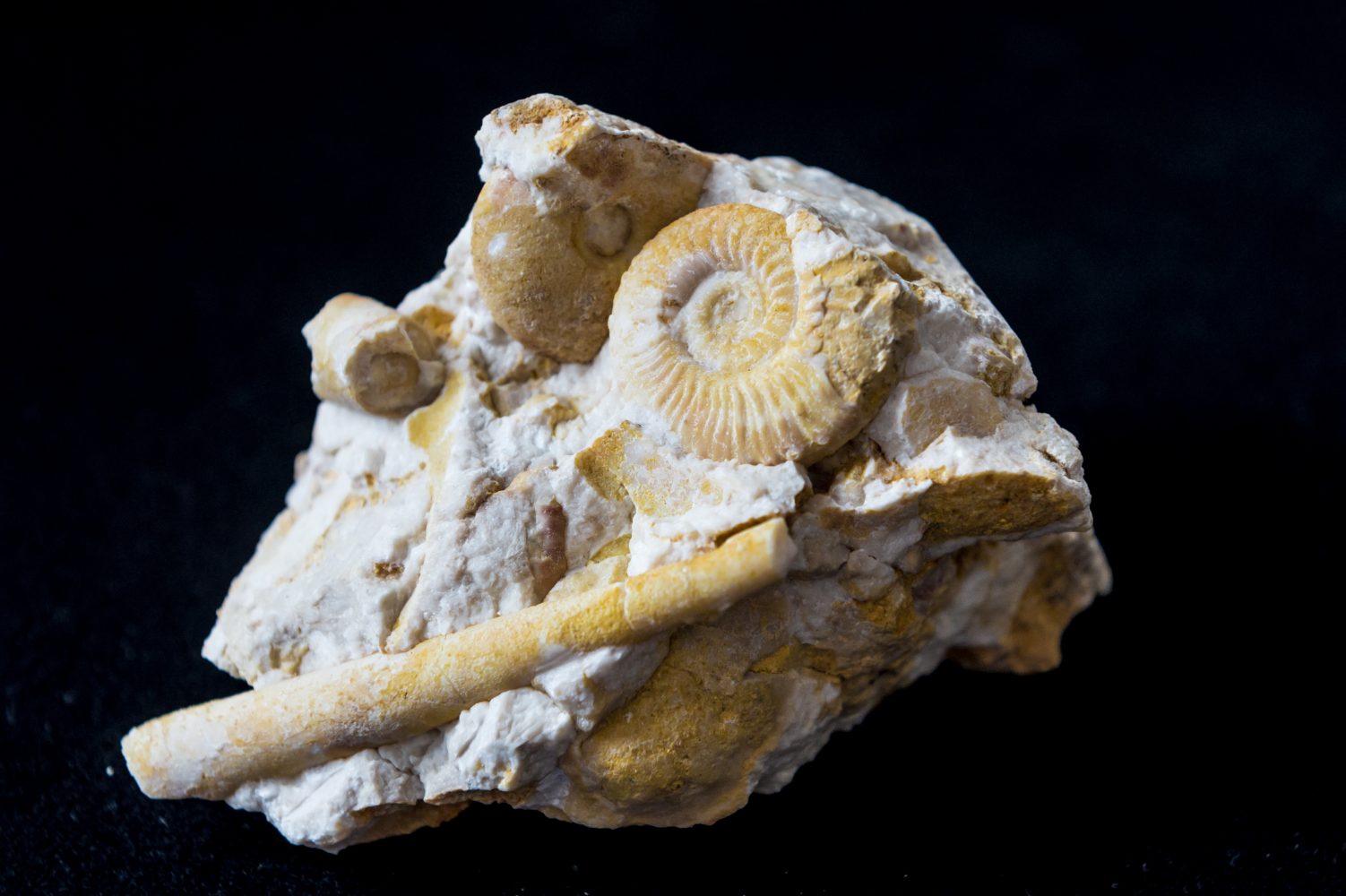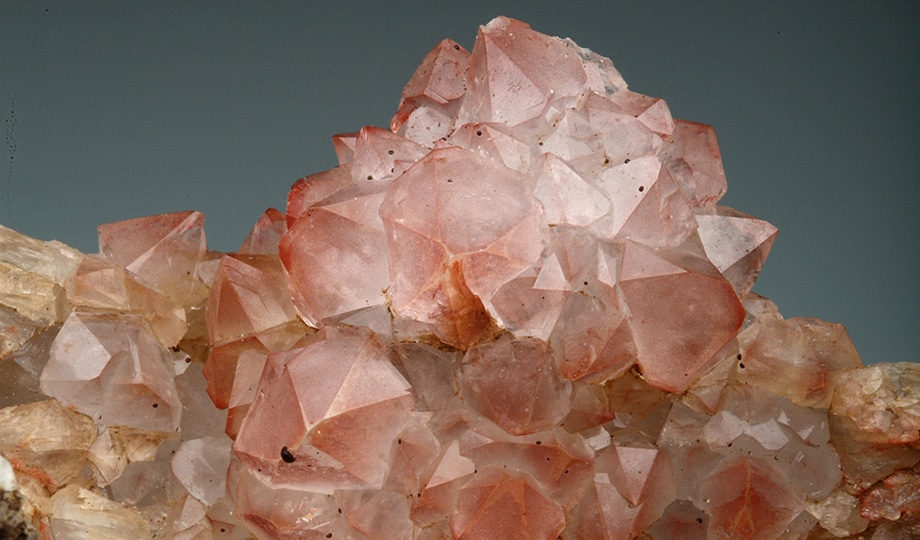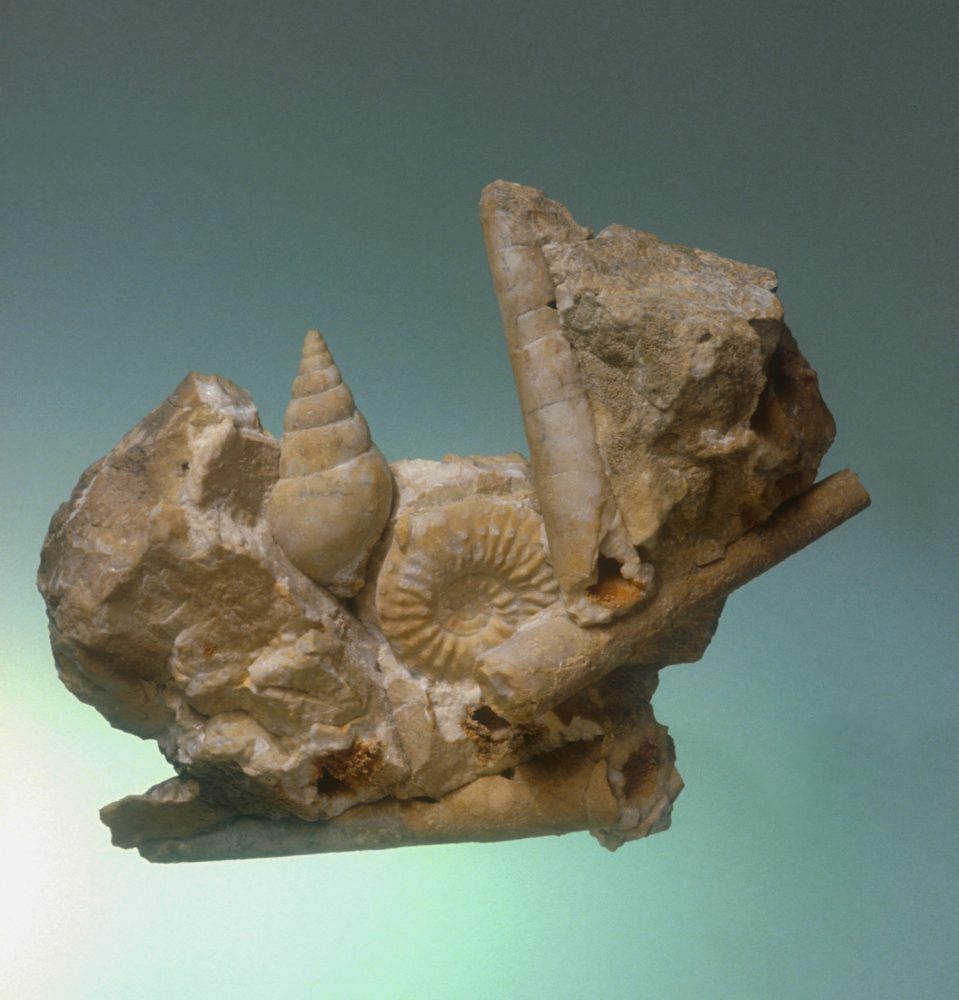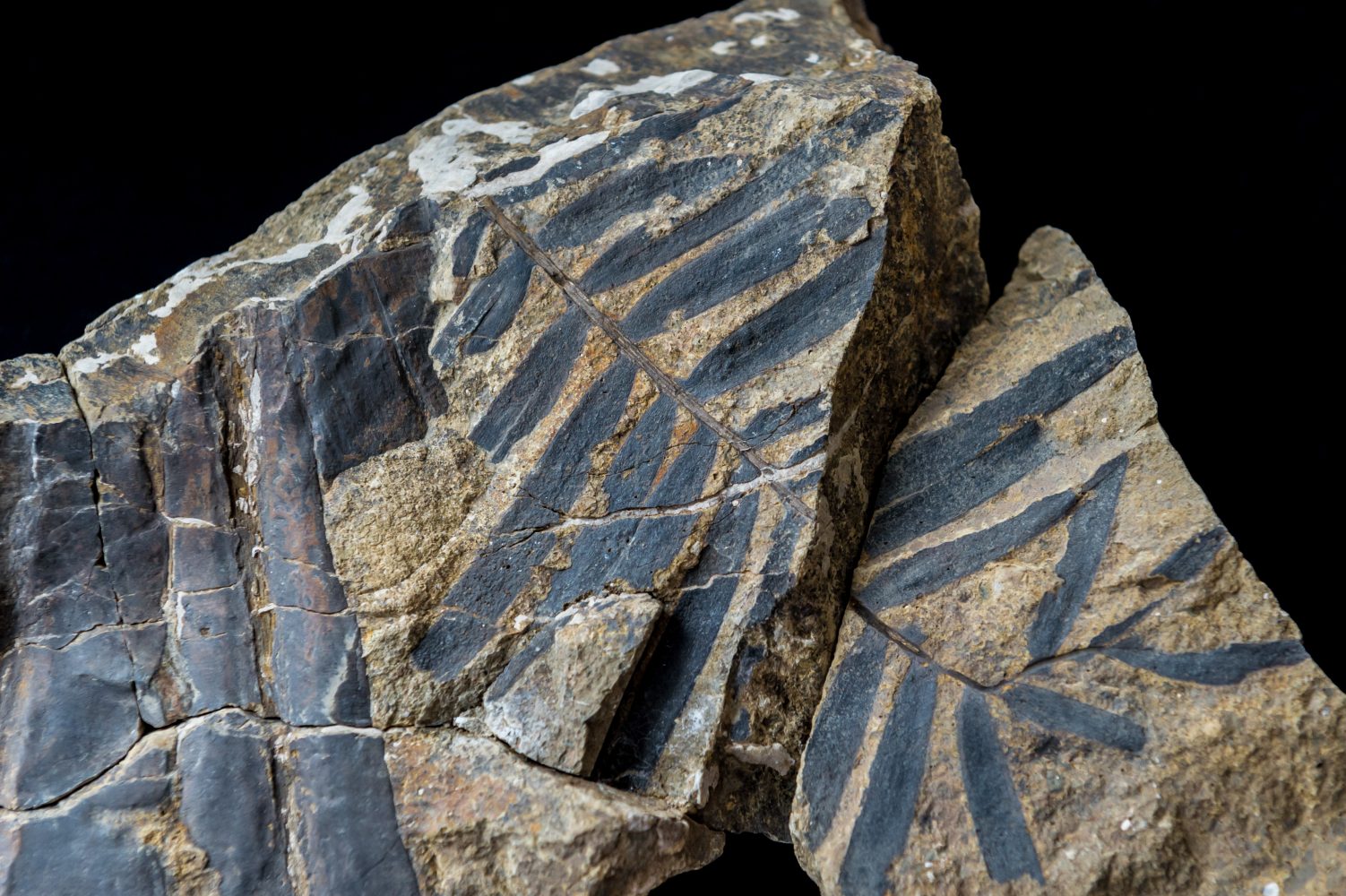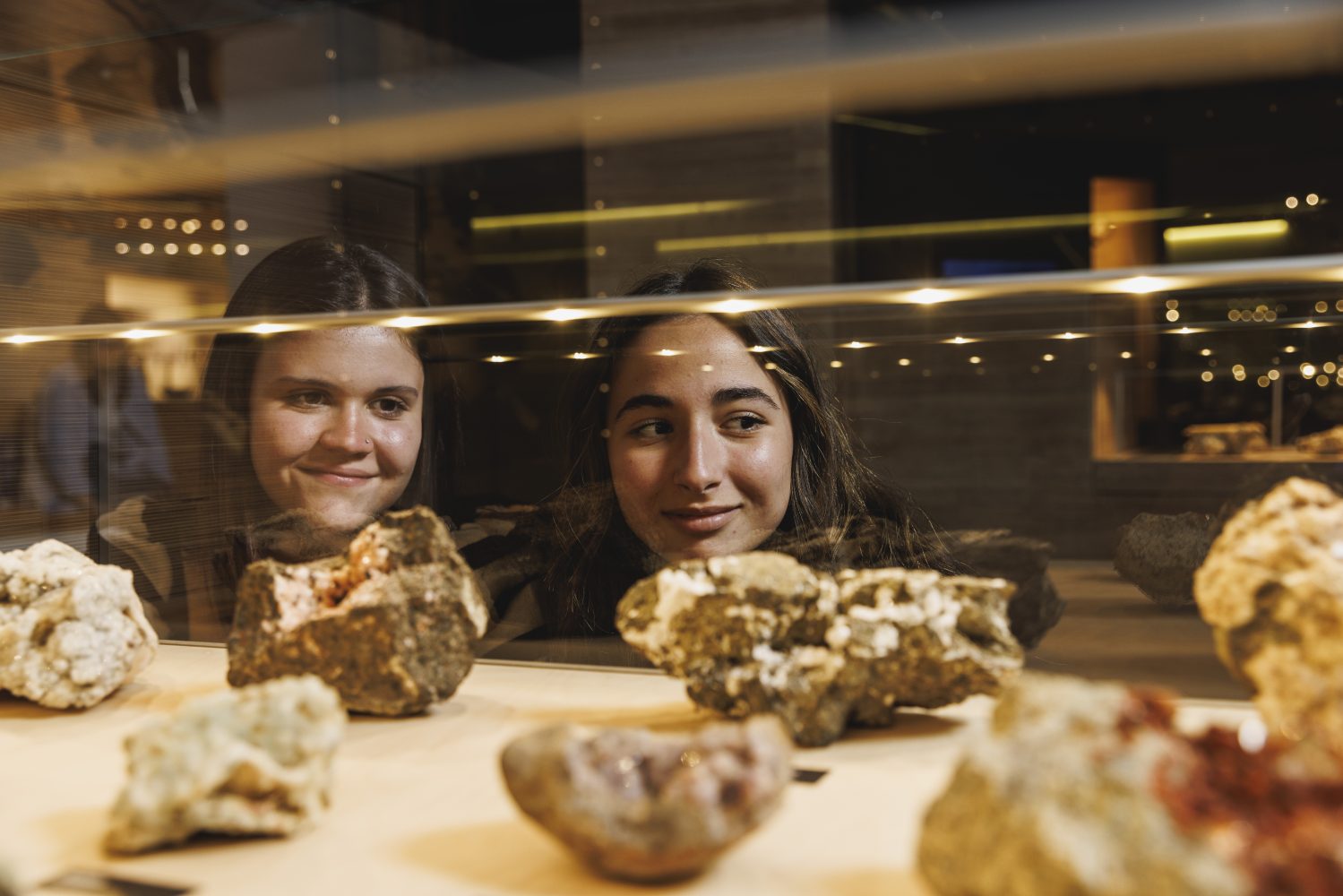
1899: the birth of the museum
The oldest nucleus of the collections dates back to 1899 when the first museum was created thanks to the initiative of the Società Magistrale di Fiemme e Fassa.
Yesterday as today, there are no dusty showcases or shelves; here in Predazzo, there has always been a dynamic and international cultural environment. It is no coincidence that theories on the origin of the Dolomites found scientific evidence right here.
The ship in the mountains
What is a ship doing in the middle of the mountains? We are not talking about a ship laden with treasures, but about a legendary hotel. The Nave d’Oro or Golden Ship, in the heart of Predazzo, was a safe haven for those who, in the early nineteenth century, loved to study nature. The uniqueness and beauty of the Dolomite territory soon became popular throughout the world: this was the beginning of the scientific, tourist and mountaineering era that transformed the Dolomites into an internationally renowned destination.
A mineralogist’s Eldorado
Are you mad about minerals? Then you’re in the right place. In the museum, you can enjoy the incredible mineralogical variety that characterises the Predazzo and Monti Monzoni area, a veritable hotbed of crystal treasures, famous worldwide.
The most beautiful mountains
The Dolomites have been a UNESCO World Heritage Site since 2009. Do you know the reasons for this recognition? The museum’s multimedia gallery illustrates the uniqueness of the Dolomite territories and the delicate balance of the mountain ecosystem. The Dolomites are some of the most beautiful mountains in the world. If we are to protect them, however, we must all commit to doing so.
The Marmolada and the colours of the sea
Close your eyes. Can you imagine the sound of sea waves? Today the Marmolada is the Queen of the Dolomites. But 240 million years ago it was a tropical atoll. Embedded in the rocks left uncovered by the gradual retreat of the glacier, there are traces of that geological era: wonderful fossil shells that, to your surprise, have retained their original colours.
Lagorai: the beginning of the story
Today, it is one of the wildest and most fascinating mountain ranges in Trentino. About 280 million years ago, during the Early Permian Period, volcanic eruptions and pyroclastic flows made it a very inhospitable area, to say the least. This was true also for the Tridentinosaurus antiquus, a small lizard-like reptile: its fossil remains, discovered in 1931 on the Altopiano di Pinè, tell of a sudden shower of ash and lapilli that surprised it, fossilising it instantly.
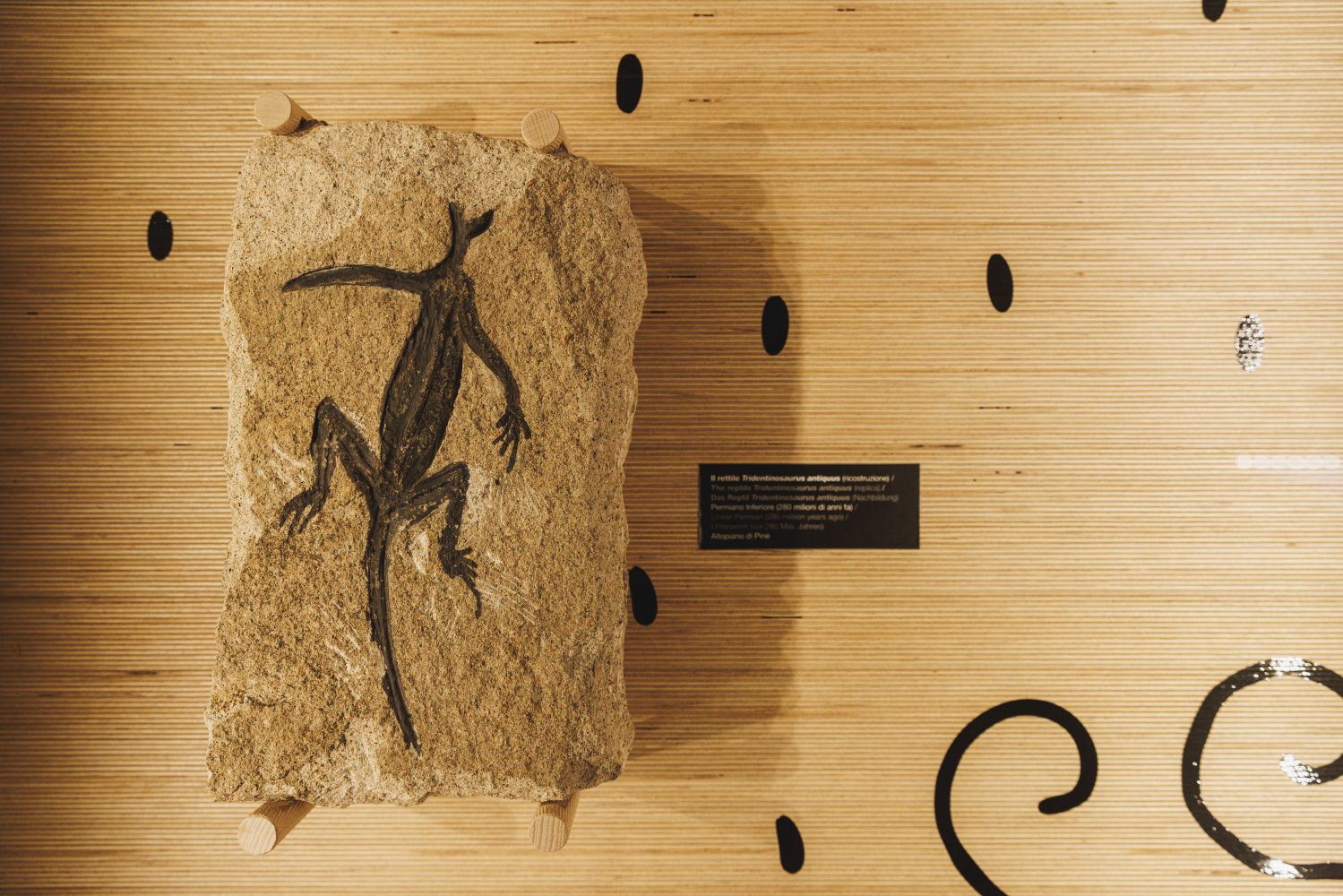
The Latemar, tales of worlds that are no more
Fossils of ammonites, gastropods and giant ferns take you back in time.
Where today there are rocks and cliffs, millions of years ago there was a tropical island surrounded by a crystal clear sea. 238 million years ago, a huge eruption of ash and lapilli buried the fern and coniferous forest of the Latemar atoll: the fossilised silhouettes of leaves, fronds and trunk fragments tell the story of how the Dolomite landscape has changed.
Catinaccio, how times change
How can you tell how old a rock is? One of the methods used is to search for guide fossils embedded in the rocks, i.e. the remains of organisms, animal and plant, marine or terrestrial, characterised by a wide geographical distribution that lived in a certain time interval. Ammonites, for example, small molluscs with a spiral-shaped shell, can tell us a lot about the age of the rocks.
Sella Group, the fortress at the gates of heaven
A rock castle with spectacular shapes. A stone fortress towering above the meadows and pastures below. A majestic Dolomite island silhouetted against the sky. This is how the Sella Group appears to our eyes today, a rocky summary of the mighty forces that have shaped the Dolomites over the last 60 million years.
Humanity and mountains, what’s the link?
Can you hear the voices of those who have lived in these mountains? Peaks and winds are the guardians of so many tales of everyday life: the chronicles of soldiers from the front during the First World War, encounters with extraordinary characters such as Maria Ogilvie Gordon, the first woman to graduate in geology, or Theodor Christomannos, considered a pioneer of tourism in the Dolomites.
The Nave d’Oro hotel register, stories of the community
The foresight of Michele Giacomelli, the first owner of the Nave d’Oro’ hotel, is exemplary. It is thanks to him, in fact, that we have traces of the melting pot of personalities in science, letters and the arts that was Predazzo in the nineteenth century. It was his idea to collect, pen on paper, the signatures of his illustrious guests illustrated with annotations, sketches and various anecdotes. These stories are now collected in the ‘Memoriale degli insigni filosofi viaggiatori che nei loro letterarj viaggi per geognostiche operazioni honourarono Predazzo e l’albergo di Michele Giacomelli’ (Memorial of the illustrious philosopher travellers who honoured Predazzo and Michele Giacomelli’s hotel on their literary travels). The signed registers are on display in the museum, an important testimony to over 150 years of the history of tourism in Predazzo and the Dolomites, from its origins until this historic hotel closed in the sixties.
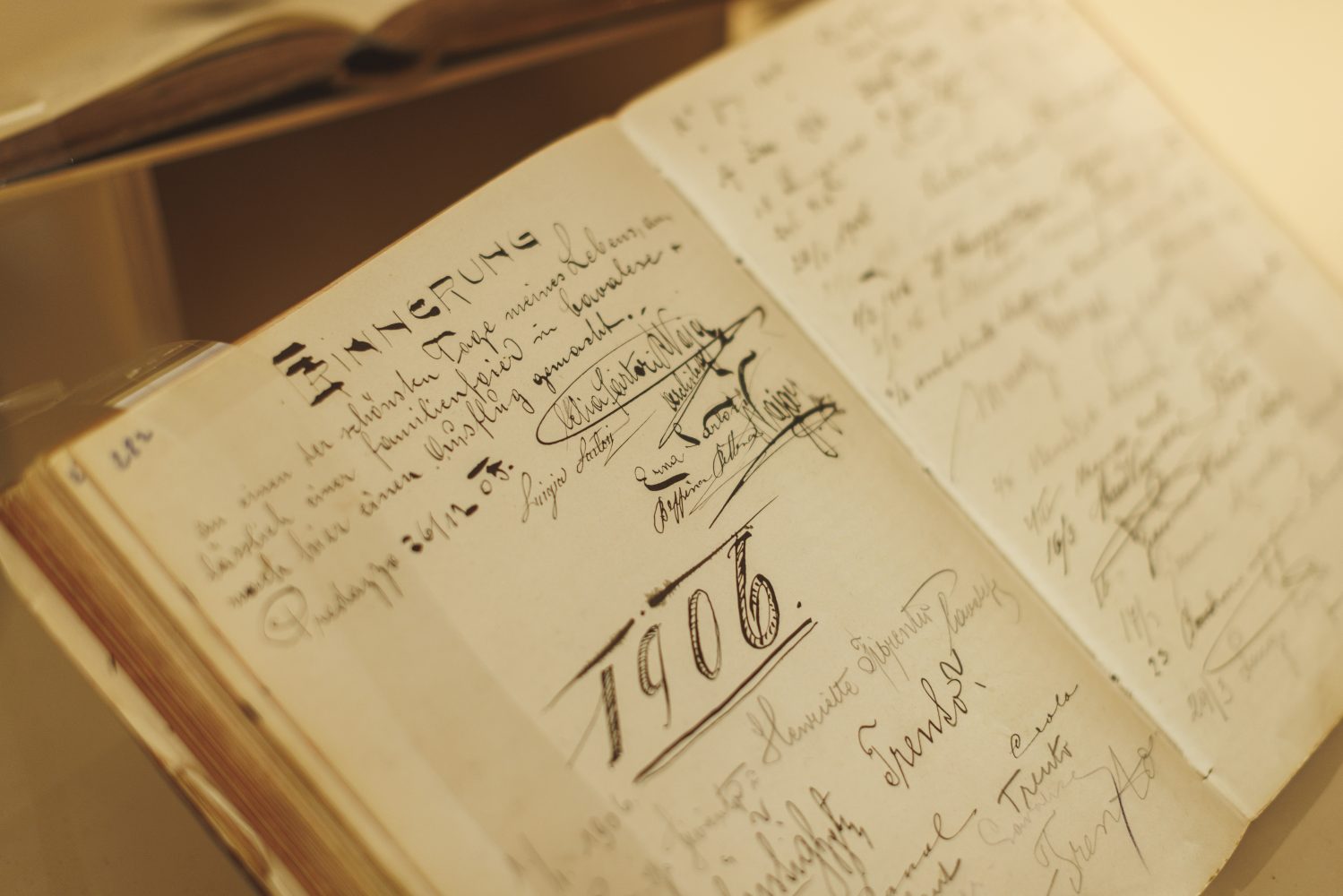
A zero-km museum
The current museum building dates back to the seventies and was built on the site of the old public school. Many of the materials used come from the surrounding area. The floors in the rooms are polished pink granite, quarried near Predazzo. For the hall dedicated to the Nave d’Oro hotel, hard-wearing larch wood, commonly used in traditional construction and furniture, was chosen. Whereas a softer stone pine wood, on the other hand, was used for the exhibit that connects the two floors in the museum. Can you smell its enveloping scent?
